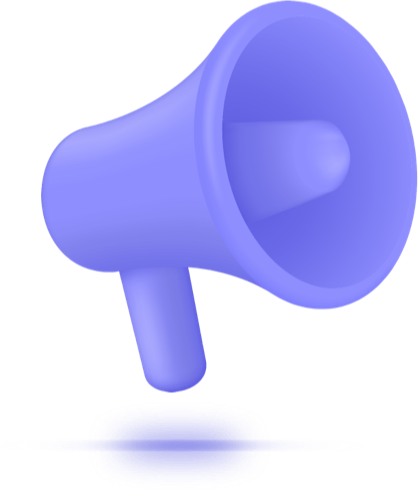Drug rehab centers have an important and life-changing role in helping individuals overcome addiction. However, with the increasing number of rehab centers, it’s becoming more challenging to stand out and attract clients. That’s where drug rehab marketing strategies come into play.
In this article, we’ll reveal some effective drug rehab marketing strategies that can help your center reach more people in need. From creating a strong online presence to building relationships with referral sources, we’ll cover a range of tactics that can yield impressive results.
Here are 11 effective drug rehab marketing strategies
1. Understanding the target audience for drug rehab marketing strategies
Understanding the target audience is crucial for developing effective strategies that resonate with those who need help the most. The target audience in this case includes individuals struggling with addiction, their loved ones, and even healthcare professionals seeking reliable resources and treatment options.
To gain a deeper understanding of this audience, it is important to conduct thorough market research and analysis. This involves identifying key demographics such as age, gender, location, and socioeconomic background. Additionally, delving into psychographics is equally important, as it helps determine the mindset, behaviors, and motivations of individuals seeking drug rehab services.
For instance, the target audience may consist of people who are actively seeking help, those who are in denial about their addiction, or even individuals who have relapsed and are in need of re-engagement. By understanding these different segments within the target audience, drug rehab marketers can tailor their messaging and approach to effectively reach and engage each group.
If you already have an active website, then using your Google Analytics account to identify other insights about your audience can be very useful. A few things you can discover here include:
- What cities or states your audience is in
- What channels are they coming from (i.e Facebook, Linkedin, etc)
- Which topics resonate with them
- What terms they’re searching
It is also crucial to consider the emotional and psychological aspects of the target audience. Addiction is a sensitive and deeply personal issue, and marketing efforts should take this into account. Empathy, compassion, and a non-judgmental tone are essential when creating content and advertisements that resonate with potential clients.
By truly understanding the target audience for drug rehab marketing, addiction treatment centers can ensure that their strategies are impactful, relevant, and ultimately successful in reaching and helping those in need.
2. Developing a strong brand identity for your rehab center
Developing a strong brand identity for your rehab center is crucial in establishing trust, credibility, and recognition in a competitive market. A well-defined brand identity helps differentiate your center from others and conveys a sense of professionalism and expertise to potential clients.
Start by clearly defining your mission, vision, and values. What sets your rehab center apart? What are your core beliefs and principles? Clearly articulating these foundational elements will guide your branding efforts and help shape your center’s overall identity.
Once you have a clear understanding of your center’s identity, it’s important to consistently communicate it across all touchpoints. This includes your website, social media profiles, marketing materials, and even the physical environment of your center. Use consistent branding elements such as logos, colors, and fonts to create a cohesive and recognizable visual identity.
Beyond visual elements, your brand identity should also be reflected in your messaging. Craft a compelling and authentic brand story that resonates with your target audience. Highlight the unique qualities and benefits of your rehab center, and emphasize the compassionate and personalized care you provide.
In addition to conveying your brand identity through your own channels, consider partnering with influencers, industry experts, or even former clients who can serve as brand ambassadors. Their testimonials and endorsements can help build credibility and trust in your rehab center.
Remember that building a strong brand identity takes time and consistency. Continuously monitor and evaluate how your brand is perceived in the market, and be willing to adapt and evolve your branding strategies as needed. By establishing a strong brand identity, you can effectively position your rehab center as a trusted and reputable choice for those seeking recovery and support.
3. Create a drug rehab center website that converts visitors into clients
Developing a website for a drug rehab center that converts visitors into clients is a complex process that requires attention to detail and careful consideration of the needs of your target audience. Here are some essential elements that you should include on your website:
Onsite blog that provides valuable information and showcases your expertise in the field of addiction treatment. This blog should be updated regularly with informative and engaging content that highlights your commitment to helping people overcome addiction.
Photo gallery that showcases high-quality, professional photos of your facilities. These photos should capture the essence of your center, highlighting the environment, amenities, and services that you offer.
Photos of people who have successfully completed your program. These photos should be accompanied by written testimonials or case studies, providing visitors with a glimpse into the success stories that are possible with your program.
‘About Us’ section provides detailed information about your center’s history, mission, and values, as well as bios and photos of your professional staff. By providing this information, you can build trust and credibility with potential clients and help them feel more comfortable about choosing your center.
Easy-to-find contact information and a prominent call-to-action (CTA) on your site. This CTA could be a ‘click-to-call’ button, a form to request more information, or a chatbot that can answer questions in real-time.
Information about payment options, insurance coverage, and links to your social media profiles. You should also ensure that your site’s SEO is optimized to rank well in search engines and that your web design is clean, responsive, and easy to navigate.
Unique selling proposition (USP) that sets your clinic apart from others. This could be a niche treatment specialty, a top rating or success rate, or a focus on serving a specific demographic, such as drug rehab for doctors. Whatever your USP may be, make sure it’s prominently featured on your website, so that visitors know what sets you apart from the competition.
4. Website Optimization
Website optimization involves implementing strategies and techniques that enhance website performance and improve user experience. By optimizing your website, you can attract more visitors, engage them effectively, and ultimately convert them into clients.
One key element of website optimization is ensuring fast loading times. In today’s fast-paced digital world, users expect websites to load quickly. If your website takes too long to load, users are more likely to abandon it and look for alternatives. To optimize loading times, you can compress images, minify code, and utilize caching techniques. These optimizations can significantly improve website performance and provide a seamless user experience.
Another important aspect of website optimization is mobile responsiveness. With the increasing use of mobile devices, it is crucial that your website is mobile-friendly. A responsive design ensures that your website adapts to different screen sizes and provides a user-friendly experience across all devices. This not only enhances user satisfaction but also improves your website’s search engine rankings, as mobile-friendliness is a ranking factor for search engines like Google.
User experience is a key factor in website optimization. It involves designing your website in a way that is intuitive, easy to navigate, and visually appealing. Clear and concise navigation menus, well-organized content, and strategic placement of call-to-action buttons can significantly improve user experience. Additionally, incorporating interactive elements such as videos, quizzes, or live chat features can further engage users and increase their time spent on your website.
5. The Power of Search Engine Optimization (SEO)
Search Engine Optimization (SEO) is a crucial component of any successful online marketing strategy. In the highly competitive drug rehab industry, where visibility is key, having a strong web presence is essential for attracting and connecting with potential clients.
By implementing effective SEO techniques, you can improve your website’s visibility and ranking in search engine results, ultimately driving more organic traffic to your site. This increased visibility can significantly impact your online presence and help you stand out in a crowded marketplace.
To improve your website’s SEO, start by conducting thorough keyword research. This involves identifying the specific search terms and phrases that potential clients are using when looking for drug rehab services. By optimizing your website content with these relevant keywords, you can increase the likelihood of your site appearing in search engine results when someone searches for those specific terms.
In addition to keyword optimization, other important SEO factors include optimizing your website’s meta tags, improving page load speed, creating high-quality and engaging content, and building a strong backlink profile. These strategies not only improve your website’s visibility but also enhance the overall user experience, leading to higher engagement and increased conversions.
It’s worth noting that SEO is an ongoing process and requires continuous monitoring and optimization. Search engine algorithms are constantly evolving, and staying up-to-date with the latest trends and best practices is essential to maintain and improve your website’s visibility in search engine rankings.
By harnessing the power of drug rehab SEO, you can position your drug rehab facility as a trusted and authoritative resource in the industry.
6. Creating compelling and informative content to engage potential clients
Creating compelling and informative content is a crucial aspect of any successful drug rehab marketing strategy. When potential clients are seeking help for addiction, they are often in a vulnerable state and looking for trustworthy and reliable information. By providing valuable content, you can establish your rehab facility as an authority in the field and build trust with your audience.
One effective way to engage potential clients is by creating blog posts that address common questions and concerns related to addiction and recovery. These blog posts should be well-researched, provide accurate information, and offer practical advice or insights. Topics could include the signs and symptoms of addiction, different treatment options available, success stories from past clients, and tips for relapse prevention.
Additionally, consider using visual content such as infographics or videos to present information in a more engaging and digestible format. These types of content can help simplify complex concepts and make them easier for potential clients to understand.
It’s also important to leverage the power of storytelling in your content. Sharing personal stories of recovery can be incredibly impactful and relatable for individuals seeking help. These stories can inspire hope and showcase the positive outcomes that can be achieved through your rehab program.
Furthermore, make sure to optimize your content for search engines by conducting keyword research and incorporating relevant keywords naturally throughout your content. This will help your blog posts rank higher in search engine results, making it easier for potential clients to find your valuable information.
7. Leveraging social media platforms for increased visibility and engagement
Social media has become a crucial part of our lives, and businesses have understood the importance of using these platforms to connect with their audience. The same goes for drug rehab marketing, where social media can be a powerful tool to increase visibility and engage with individuals seeking help.
To make the most of social media, it is crucial to establish a strong presence on popular platforms like Facebook, Instagram, and LinkedIn. Creating business pages that reflect your brand values and sharing informative content on drug addiction, recovery journeys, and seeking professional help can help you build your online reputation.
Engaging with your audience is the key to success on social media. Encourage your followers to share their experiences, ask questions, and participate in discussions. Respond to comments and direct messages promptly, showing your audience that you care and are available to provide support.
Visual content is a powerful way to capture attention and convey your message effectively. Sharing compelling images, videos, and infographics that highlight the positive impact of your rehab services can help you gain traction on social media. Testimonials and before-and-after stories can also be a powerful tool to showcase success and inspire hope.
Paid advertising is another way to expand your reach on social media platforms. Targeting specific demographics, such as individuals struggling with addiction or their families, can help you drive traffic to your website and increase inquiries, ultimately leading to more admissions.
To make the most of social media, it’s essential to stay updated with the latest trends and algorithms on each platform. Regularly analyzing your analytics can help you understand what content resonates with your audience and adjust your strategy accordingly.
8. Pay-Per-Click
PPC, or pay-per-click advertising, presents a powerful tool for drug rehab centers to drive success in their marketing efforts. With the increasing demand for addiction treatment services, it has become crucial for rehab centers to stand out and reach their target audience effectively. Here are some key benefits of utilizing PPC in drug rehab marketing:
PPC allows rehab centers to specifically target their ads to individuals searching for addiction treatment services. By selecting relevant keywords and demographics, you can ensure that your ads are displayed to the right audience at the right time. This targeted approach helps maximize the chances of reaching potential patients who are actively seeking help.
Unlike organic search engine optimization (SEO) efforts that require time to gain traction, PPC delivers immediate results. Once your PPC campaign is launched, your ads can start generating traffic and potential leads within days. This speed-to-market advantage is particularly valuable in the competitive drug rehab industry, where timely access to potential patients is crucial.
With PPC, you have full control over your advertising budget. Unlike traditional advertising methods, where you pay a fixed amount regardless of results, PPC allows you to set a daily or monthly budget and pay only when someone clicks on your ad. This cost-control feature ensures that your marketing dollars are spent efficiently, giving you a higher return on investment.
PPC provides robust analytics and tracking tools that allow you to measure the effectiveness of your campaigns. You can track important metrics such as click-through rates, conversion rates, and cost per acquisition to evaluate the performance of your ads. These insights enable you to optimize your campaigns over time, improving the overall success of your drug rehab marketing efforts.
PPC offers unparalleled flexibility and scalability. You can easily modify your campaigns, adjust your ad copy, or target different keywords based on the evolving needs of your rehab center. Additionally, as your rehab center grows, you can expand your PPC campaigns to reach a wider audience and capture more potential patients.
9. Building relationships with referral sources and networking within the industry
Building strong relationships with referral sources and networking within the drug rehab industry is a crucial aspect of effective marketing strategies. Referral sources, such as therapists, doctors, interventionists, and other healthcare professionals, play a significant role in connecting individuals struggling with addiction to the appropriate treatment facilities.
Establishing trust and collaboration with these referral sources is key to ensuring a steady stream of qualified leads. This can be achieved through consistent and open communication, providing them with educational resources, and demonstrating your facility’s expertise and commitment to quality care.
Attending industry conferences, seminars, and events provides valuable opportunities for networking within the addiction treatment industry. These gatherings allow you to connect with like-minded professionals, share experiences, and exchange ideas. Building relationships with other treatment centers, professionals, and organizations within the industry can lead to potential collaborations, referrals, and partnerships.
In addition to in-person networking, online platforms can also serve as powerful tools for connecting with referral sources and industry professionals. Engaging in relevant online communities, participating in forums, and sharing informative content on social media can help establish your facility as a trusted and knowledgeable resource within the industry.
10. The importance of print advertising in drug rehab marketing
When it comes to drug rehab marketing, it’s easy to get caught up in the digital world. After all, social media, email marketing, and online advertising can all be incredibly effective tools for reaching potential clients. However, in the rush to embrace all things digital, it’s important not to overlook the importance of print advertising.
Here are some reasons why you should be using print advertising to connect with your audience and get your message out there:
Establishes trust and credibility: Well-designed print ads placed in respected publications or community resources can provide reassurance and legitimacy to those seeking help for addiction.
Targets specific demographics: Print advertising can be a great way to target specific demographics. For example, a rehab facility that specializes in treating veterans could place an ad in a military magazine or newsletter. A facility that focuses on helping women overcome addiction could distribute brochures at women’s health clinics or gyms.
Tangible and lasting impression: Unlike online ads, print ads can be physically held and revisited at the reader’s convenience, allowing potential clients to thoroughly consider the services offered.
Provides an opportunity for creativity and storytelling: Through captivating visuals, compelling headlines, and well-crafted copy, drug rehab centers can communicate their unique selling points, treatment approaches, and success stories.
While digital marketing strategies have their merits, it’s important not to underestimate the value of print advertising in drug rehab marketing. By utilizing this traditional medium alongside online efforts, drug rehab centers can create a comprehensive and impactful marketing strategy that captures the attention and trust of those who need their services most.
11. Tracking and analyzing marketing efforts for continuous improvement
When it comes to marketing a drug rehab center, it’s essential to track and analyze your efforts to ensure that you’re making the most of your resources and reaching your target audience effectively.
By using tools like Google Analytics and Google Search Console, you can gain valuable insights into how your website is performing, which pages are most popular, and which marketing channels are driving the most traffic. This information can help you make data-driven decisions about where to allocate your marketing budget and how to adjust your strategy for continuous improvement.
Additionally, tracking and analyzing your marketing efforts can help you identify areas where you need to improve your messaging or better target specific demographics. By taking a strategic and data-driven approach to drug rehab marketing, you can continuously improve your efforts and ultimately help more people overcome addiction.
Revamp Your Drug Rehab Marketing Strategy with Huely Inc.
We understand that your drug rehab center is not just a business, but a lifeline for those seeking help. That’s why we offer proven marketing solutions that not only bring in new treatment leads but also raise awareness about the important work you do. With almost a decade of experience in the industry, we have helped many drug rehabs increase traffic, leads, and income through our ROI-based campaigns.
Our team of growth experts has a deep understanding of the addiction treatment industry and the unique challenges that drug rehab centers face in marketing their services. We leverage this knowledge to provide tailored and data-driven solutions that deliver results.
We are committed to helping drug rehab centers like yours make a positive impact on the lives of those struggling with addiction. Contact us today to learn how we can help you achieve your marketing goals and reach more people in need.




